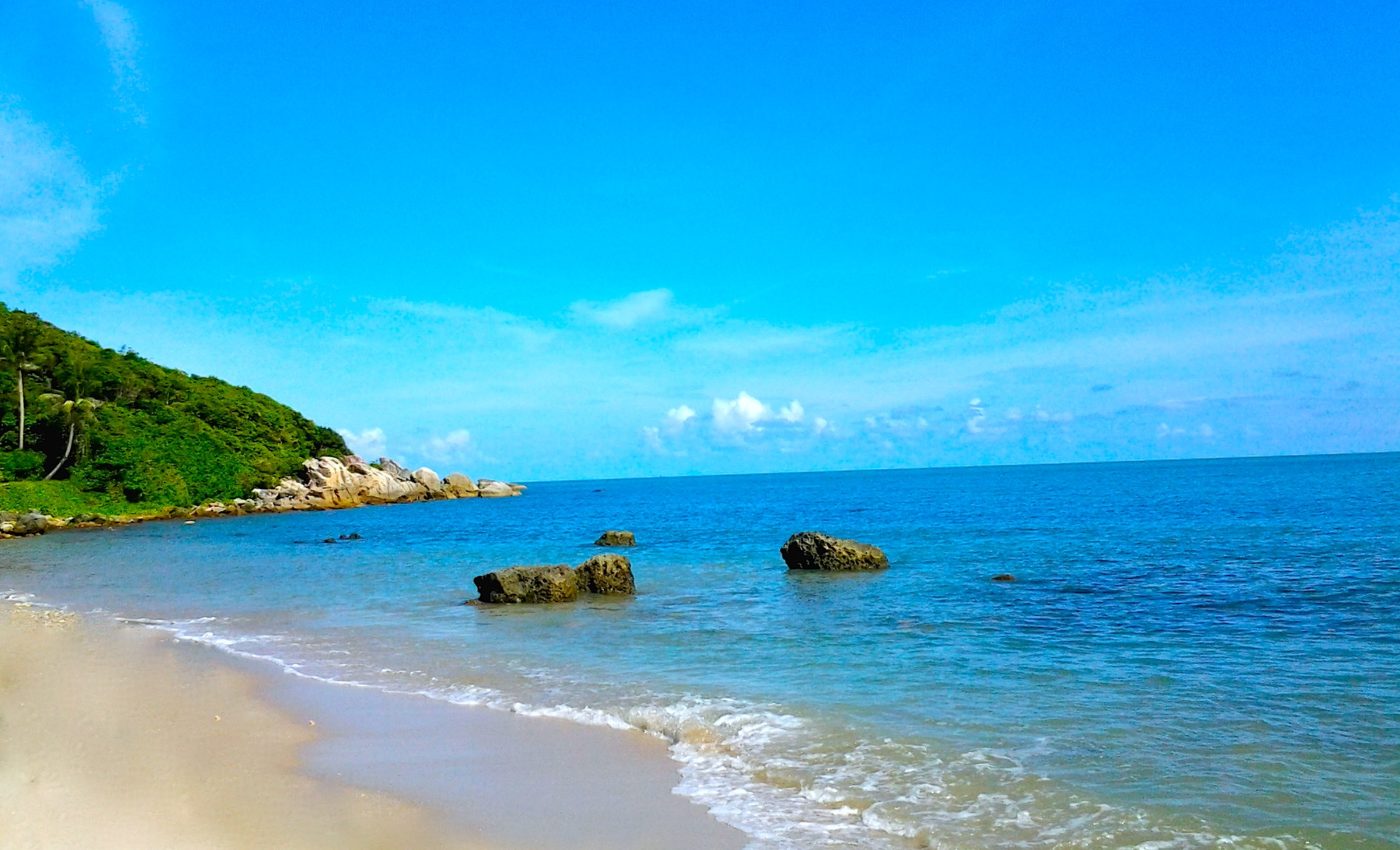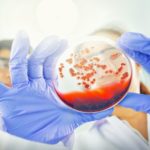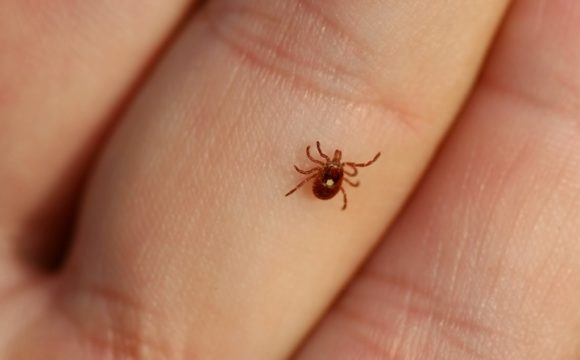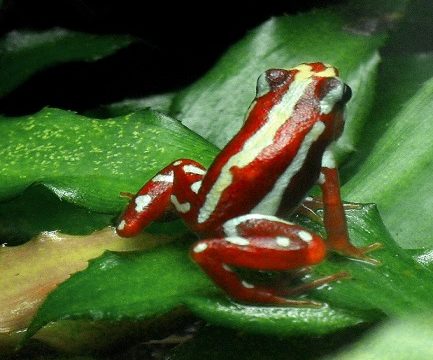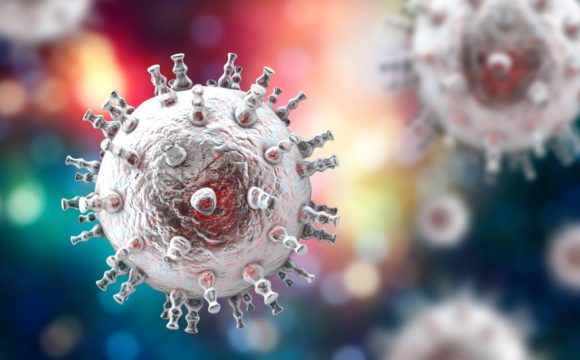Microorganisms are fascinating creatures. They are mostly single cellular and even the multicellular microbes consist of just a few cells. Given this, one would easily come to the conclusion that they are primitive creatures, with very minimal ability to communicate with each other and live as a community. But in fact, this assumption is very wrong. These simple organisms have been found to live together in great synchronisation, with an astounding ability to communicate with each other and foster each other’s growth. But how do they do that? Biofilms!
Biofilms are a group of microorganisms which live together, forming very close physical associations with each other. These microbes can belong to the same or different species. These microbes collectively secrete a polymeric substance into the extracellular space, which sort of holds them together in the form of a large community which can communicate within themselves with remarkable efficiency. These biofilms are largely undetectable – so much so that we didn’t even know of their existence till quite recently. Biofilms are one of the most resilient living communities – they help microbes defend themselves against even the strongest antibiotics. Biofilms may form in any favourable condition – on moist rocks, toilet seats, in water, in fact, they are even present inside our body. One such place which harbours a wide variety of biofilms is the seashore.
Let us first discuss why microbes would be interested in forming biofilms in an ecosystem like the seashore. The most obvious one – it would give them mechanistic strength. Microbes which are bound would have a lower chance of being washed off by ocean currents which sweep the shore. Secondly, biofilms would protect the microbes from predators and other possible chemical stressors, thus giving them a survival advantage. Thirdly, acquisition of nutrients is also easier if the microbes work as a team.
In the seashore, there are two major ecosystems where biofilms may grow and develop – the sand and the rocks. Based on this, biofilms on seashores can be divided into two broad categories.
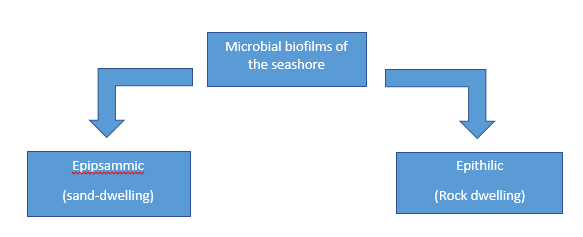
Epilithic biofilms are those which form on the rocks found on the seashore. These biofilms have been known to have a profound impact on the flora and fauna of the rock ecosystem. Some of the more common microbes found in the epilithic biofilms are represented in the figure below:
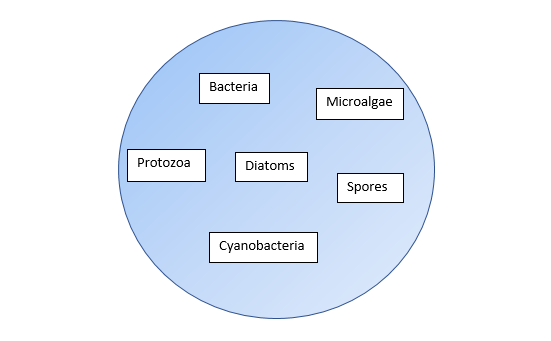
The type of microbes and the type of biofilm are largely influenced by a number of biotic and abiotic factors. For example, let us look at the image given below:

Other factors such as the wave strength, predator species, temperature, water levels, etc., all influence the nature of rocky seashore biofilms.
Now let us have a look at epipsammic biofilms. Epipsammic biofilms are those which form on sand. Like the epilithic biofilms, their composition largely dependent on the location – how close the sandy area is to the tide. There are three tidal zones which harbour epipsammic biofilms:
- The subtidal zone, which is constantly wetted by the incoming tide.
- The intertidal zone, which is slightly higher up on the seashore.
- The supratidal zone, which is very high up on the beach and here, the tide does not reach the biofilms very often.
Unfortunately, while sandy beaches harbour a large variety of harmless microbial biofilms, they are also breeding grounds for harmful pathogenic microbial biofilms such as Enterococci. These biofilms can serve as vehicles of transmission for pathogens. Necessary steps must be taken to ensure that recreational beaches do not turn into breeding grounds for infectious diseases.
Evolutionarily speaking, biofilms are a marvel of nature. They are an example of the remarkable ability of microbes to survive and adapt to even the harshest environmental conditions. Biofilms in seashores have a large impact on the biodiversity of the ecosystem. There is a lot we can learn by studying their formation and their interaction with their environment.
References:
- https://www.livescience.com/57295-biofilms.html
- https://www.frontiersin.org/articles/10.3389/fmars.2018.00126/full
- https://www.ncbi.nlm.nih.gov/pmc/articles/PMC4219924/
- https://www.jstor.org/stable/2679846?seq=1#page_scan_tab_contents
- https://www.int-res.com/articles/meps2010/424/m424p015.pdf
- https://www.cambridge.org/core/services/aop-cambridge-core/content/view/358E2327F6F8FEF0ADA18F1022957CDC/S0025315415000843a.pdf/beach_sand_and_the_potential_for_infectious_disease_transmission_observations_and_recommendations.pdf
- https://www.ncbi.nlm.nih.gov/pubmed/25168975
- https://www.sciencenewsforstudents.org/article/beaches-can-be-germy-playground



